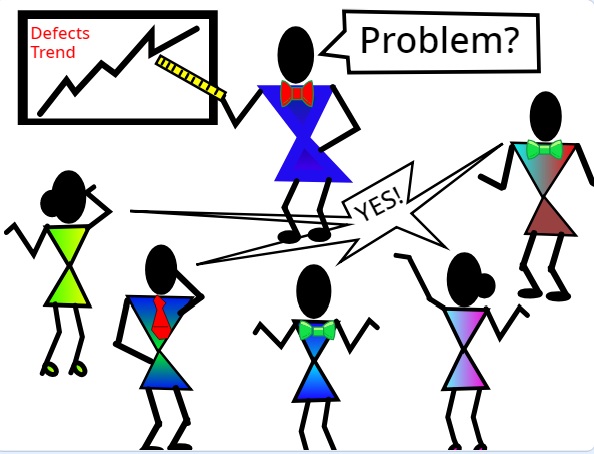
During my interactions with my students/ colleagues who play the role of Scrum Master, they tell me that they see gaps in how things are implemented compared to the rules of the Scrum Guide. They want to fix such issues, but get pushed back by the team and are unable to make a dent. I tend to ask them, “If I ask you to switch writing from your stronger arm to your weaker arm, would you consider it?”. Of course, their answers range from straightforward “No” to “I may consider, but don’t think it’ll work that well”. By reflecting upon how this situation ties back to their approaches, they realize that they “already made the decision” for their team and faltered; even though they were working in the best interest of the team. If you are facing similar issues, you’ll find this insightful.
Scrum Master is a leadership role, more specifically a Servant Leadership role. One of the key tenets of Servant Leadership is sharing of power of decision-making. Instead of you taking decisions on what is best for the team, consider ways to empower the team to take decisions. This is a tall ask for people who have been traditionally hard-wired to roll up their sleeves and ‘solve’ the problem. Here’s an idea that you want to try next time you want to influence your team to try something new.
Before you start with any conversations, I suggest leaving your ego outside the room (or the video conferencing bridge that you may be using a lot lately). Consciously remind yourself that it’s about the team, not you! Your goal is to make them successful, so they feel proud of their achievements.
Do your homework
First, gather data about gaps so you have evidence(s) to share with the team. If you can, aim to look at the negative impact that is created by the current approach (e.g., defect trends, missed Sprint Goals, technical debt trends). Visualizing this information will likely have a solid impression during the conversation … a picture is worth a thousand words.
Select a right moment and place to coach
Scrum provides Sprint Retrospective to look at opportunities for continuous improvement. It is also possible to take a few moments pause during other events for just-in-time coaching. If it is about individual team members, step away from the team space.
Ask team for their opinion

State your observations by showcasing the facts you have gathered. E.g., mention, “I am noticing that number of defects in Product Backlog is growing”. In order to get the pulse of team, you can ask powerful questions like, "How can this affect us in short/ long term?" and let the team discuss their thoughts. Actively listen to their perspective to empathize with them.
Get team’s buy-in that there is a problem

This is a crucial step of helping the team understand criticality of the issue and get their buy-in into the problem. If the team understands that the issue can become a serious impediment for them to deliver value to the stakeholders, they would look for opportunities get it resolved sooner rather than later. If needed, be open to their requests for help with roadblocks that can prevent them from moving in the right direction.
Brainstorm solutions

You can ask powerful questions like, "What have we tried before that hasn't worked for us?", and "What experiment can we run to see if it can help move in the right direction?" to look at options that team is willing to consider for fixing the issue. Facilitate the conversation so they stay focused and do not digress from the task at hand. You can leverage Liberating Structures to ensure everyone is engaged and feels that their voices are heard.
Shared Decision Making
If a decision comes from the team, respect and support it, even if it may not be an optimal decision according to you. In case, there are big gaps and you think they may be missing out on certain aspects, help them reflect on their options by asking questions like, "Have you considered how this approach may impact … (the wrong side-effect)?". This would help them going deeper into the ripple effects of their thoughts. In case the team is still struggling to come up with ideas to overcome the issue, you can share your suggestion to see if they would like to experiment with it. At this point they would be more receptive to your ideas as they have exhausted their options. Assist the team in building consensus to detailing out the way forward.
When the team collectively takes decision, they would also take the accountability of their decision. Getting the team’s buy-in on the problem has fared better for me in approaching any changes that I wanted to bring in a team. By nurturing participatory, empowering environments, and encouraging the talents of the team, Scrum Master as a servant-leader can create a more effective, motivated team. Although I said this for coaching teams, this approach is also suitable for coaching individuals.
Are you looking to explore how Servant Leadership can help you in your role as a Change Agent? You are welcome to consider joining us for one of our upcoming batches.
Courtesy: Images created by 9 year old twins! 😊
